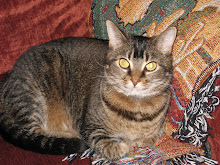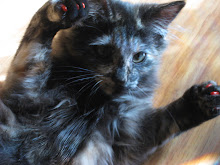
11/14/08
Last night after dinner I opened up our box of Thanksgiving decorations. (Mostly artwork that the children have done over the years and a few pieces I actually took the time to purchase when having a festive weak moment.) So, my 5 year old, Michael, peers into the box of treasures and says with great excitement, “You have a Cornucopia!?! That’s so cool!”
What’s “cool” is having your 5 year old know what a cornucopia is! And in case you didn't know...
Last night after dinner I opened up our box of Thanksgiving decorations. (Mostly artwork that the children have done over the years and a few pieces I actually took the time to purchase when having a festive weak moment.) So, my 5 year old, Michael, peers into the box of treasures and says with great excitement, “You have a Cornucopia!?! That’s so cool!”
What’s “cool” is having your 5 year old know what a cornucopia is! And in case you didn't know...
The cornucopia is a symbol of food and abundance dating back to the 5th century BC, also referred to as horn of plenty, Horn of Amalthea, and harvest cone.
In Greek mythology, Amalthea was a goat who raised Zeus on her breast milk. When her horn was accidentally broken off by Zeus while playing together, this changed Amalthea into a unicorn. The god Zeus, in remorse, gave her back her horn. The horn then had supernatural powers which would give the person in possession of it whatever he or she wished for. This gave rise to the legend of the cornucopia. The original depictions were of the goat's horn filled with fruits and flowers. The cornucopia was also a symbol for a woman's fertility. In modern depiction, the cornucopia is typically a hollow, horn-shaped wicker basket typically filled with various kinds of festive fruit and vegetables. In North America, the cornucopia has come to be associated with Thanksgiving and the harvest.
In Greek mythology, Amalthea was a goat who raised Zeus on her breast milk. When her horn was accidentally broken off by Zeus while playing together, this changed Amalthea into a unicorn. The god Zeus, in remorse, gave her back her horn. The horn then had supernatural powers which would give the person in possession of it whatever he or she wished for. This gave rise to the legend of the cornucopia. The original depictions were of the goat's horn filled with fruits and flowers. The cornucopia was also a symbol for a woman's fertility. In modern depiction, the cornucopia is typically a hollow, horn-shaped wicker basket typically filled with various kinds of festive fruit and vegetables. In North America, the cornucopia has come to be associated with Thanksgiving and the harvest.
Happy Thanksgiving! And may the horn of Amalthea richen your lives with whatever it is you wish for!














3 comments:
My wish was for you to finally start a blog :) Welcome to the blog world haha I didn't even know that's what those things were called.
Ok so I'm an idiot and signed the comment still logged into your account. That post ^ is from me :)
Love your favorite dumb blonde
Yay a new blog to read!!!
Thank you for the really sweet comment:) Means a lot!
Post a Comment